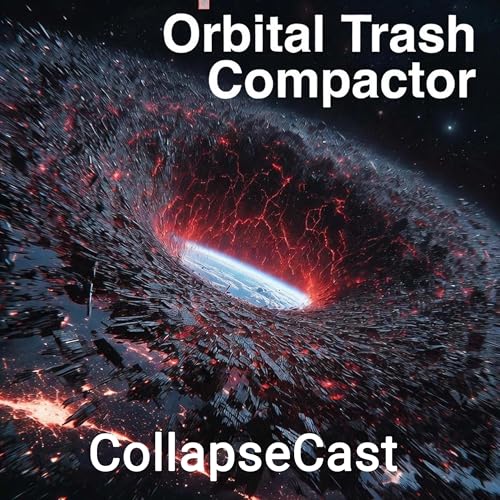
Orbital Trash Compactor: How Kessler Syndrome Could Kill the Sky - EP 4
Failed to add items
Add to basket failed.
Add to Wish List failed.
Remove from Wish List failed.
Follow podcast failed
Unfollow podcast failed
-
Narrated by:
-
By:
About this listen
Since 1957 we’ve hurled over 60,000 objects into orbit. More than 36,000 of them are still up there. Only about 6,000 are working satellites. The rest? Dead hulks, exploded fuel tanks, lost tools, and millions of fragments screaming along at 17,500 mph. In 1978, NASA scientist Donald J. Kessler warned that low Earth orbit could reach a tipping point: density so high that collisions breed more collisions, creating an unstoppable debris cascade that eventually coats the planet in a lethal shell. No new launches. No GPS. No weather satellites. No Starlink. No ISS rescue missions. Just a glittering ring of shrapnel that might stay deadly for centuries.
In this episode we dig into:
- The real collisions that have already happened (2009 Iridium-Cosmos smash, the 2021 Russian ASAT test, China’s 2007 disaster) and how each one made the math worse
- Why the “25-year de-orbit rule” is mostly theater and how mega-constellations like Starlink and Kuiper are pouring gasoline on the fire
- The terrifyingly small number of active debris-removal missions actually funded right now (literally single digits)
- The geopolitical nightmare: no one owns outer space, no one can enforce cleanup, and everyone has an incentive to keep launching until the door slams shut forever
- What a full-blown Kessler Syndrome endgame actually looks like for civilization—no more satellites, no quick recovery, and a collapse cascade that could ripple through finance, defense, agriculture, and emergency response for generations
The sky isn’t infinite. We’re turning it into a junkyard at escape velocity, and the clock is ticking louder than most people realize.
Zerobit, final word:
“Probability of catastrophic Kessler cascade by 2050 currently estimated between 12 and 38 percent and rising. Orbital carrying capacity already exceeded in multiple shells. Mitigation funding remains less than 0.3 percent of annual launch expenditure. Trendline suggests closure of low Earth orbit within most listeners’ lifetimes.”
Buckle up. The trash compactor is already closing.



